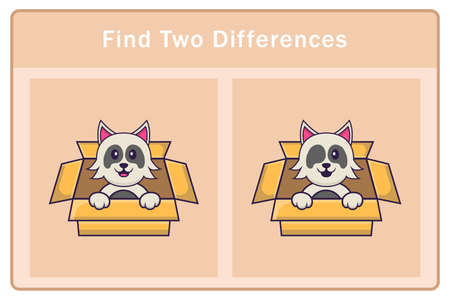1. Understanding Orthopedic Pet Beds
When it comes to providing the best comfort for your furry friend, an orthopedic pet bed might be a great option. But what exactly makes a pet bed “orthopedic”? Unlike standard pet beds, orthopedic beds are designed to provide extra support for pets with joint pain, arthritis, or other mobility issues.
What Makes a Bed Orthopedic?
An orthopedic pet bed is specially crafted to distribute weight evenly and relieve pressure on joints. This is particularly beneficial for senior pets or those with medical conditions that affect their movement. The key feature of these beds is the use of high-quality memory foam or specialized supportive materials.
Materials Used in Orthopedic Pet Beds
The materials used in orthopedic pet beds are what set them apart from regular ones. Here’s a comparison of common materials found in standard and orthopedic pet beds:
| Feature | Standard Pet Beds | Orthopedic Pet Beds |
|---|---|---|
| Filling Material | Polyester fiberfill, cotton stuffing | Memory foam, high-density foam, gel-infused foam |
| Support Level | Soft, may flatten over time | Firm, retains shape for better joint support |
| Suits Pets With Joint Pain? | No | Yes |
| Lifespan | A few months to a year | A few years with proper care |
The Difference Between Standard and Orthopedic Beds
A standard pet bed offers basic cushioning but lacks the support needed for pets with joint or muscle issues. On the other hand, orthopedic beds are designed to contour to your pets body, reducing pressure points and ensuring restful sleep.
Who Benefits Most from Orthopedic Beds?
- Seniors experiencing arthritis or hip dysplasia.
- Pets recovering from surgery or injury.
- Larger breeds prone to joint problems.
- Pets who simply enjoy extra comfort and support.
A Worthwhile Upgrade?
If your pet struggles with discomfort or stiffness after naps, switching to an orthopedic bed could make a big difference. These beds not only improve sleep quality but also contribute to long-term health benefits by reducing stress on joints and bones.
Benefits for Pets with Joint and Mobility Issues
As pets age, they often experience joint pain, arthritis, or mobility issues. Larger breeds are also more prone to developing joint problems due to their size and weight. Orthopedic pet beds are designed to provide the necessary support to ease discomfort and improve overall well-being.
Support for Older Pets
Senior pets frequently suffer from conditions like arthritis, hip dysplasia, and other degenerative joint diseases. Traditional pet beds may not offer the cushioning needed to relieve pressure on their joints. Orthopedic beds, typically made with memory foam, contour to a pet’s body, reducing stress on sore areas and promoting better sleep quality.
Comfort for Large Breeds
Larger dogs, such as Great Danes and Labrador Retrievers, put more strain on their joints due to their size. Standard pet beds may flatten over time, providing little to no support. An orthopedic bed maintains its shape and distributes weight evenly, helping prevent joint issues from worsening.
Relief for Pets with Arthritis
Arthritic pets need extra support to alleviate pain and stiffness. Orthopedic beds help by reducing pressure points and improving circulation. This makes it easier for pets to get up after resting and encourages better movement throughout the day.
Comparison: Standard Beds vs. Orthopedic Beds
| Feature | Standard Pet Beds | Orthopedic Pet Beds |
|---|---|---|
| Cushioning & Support | Loses shape over time | Molds to pets body for consistent support |
| Pain Relief | Minimal relief for joint pain | Eases discomfort from arthritis & mobility issues |
| Suitability for Large Breeds | Might not provide enough support | Designed to evenly distribute weight |
| Lifespan | Tends to wear out quickly | Durable materials last longer |
| Circadian Health Benefits | No significant impact on sleep quality | Encourages deeper, more restful sleep |

3. How to Choose the Right Orthopedic Bed for Your Pet
Picking the right orthopedic bed for your pet is essential to ensure they get the comfort and support they need. Several factors, including size, material, and your pet’s specific needs, should be considered before making a purchase.
Size Matters
Choosing the right size ensures your pet can stretch out comfortably while still getting proper support. Measure your pet from nose to tail when they’re lying down and add a few extra inches for movement.
| Pet Size | Recommended Bed Dimensions |
|---|---|
| Small (under 25 lbs) | 24″ – 30″ |
| Medium (25 – 50 lbs) | 30″ – 36″ |
| Large (50 – 100 lbs) | 36″ – 48″ |
| X-Large (100+ lbs) | 48″ or more |
Selecting the Right Material
The type of material used in an orthopedic pet bed affects both durability and comfort. Here are some common materials:
- Memory Foam: Offers excellent support and pressure relief, ideal for senior pets or those with joint issues.
- Egg Crate Foam: Provides airflow and moderate support but may not last as long as memory foam.
- Bolstered Sides: Great for pets who like to rest their head on elevated edges.
- Cotton or Plush Covers: Soft and cozy, but ensure they are removable and washable for easy maintenance.
Your Pet’s Specific Needs
Your pet’s age, health condition, and sleeping habits should guide your choice:
- Seniors & Arthritic Pets: Opt for thick memory foam beds that provide joint support.
- Puppies & Active Dogs: A durable material with a waterproof cover helps with accidents and rough use.
- Anxious Pets: Beds with bolstered sides or donut shapes can provide a sense of security.
- Cats vs. Dogs: Cats often prefer softer, enclosed spaces, while dogs may enjoy larger, open beds.
Add-On Features to Consider
Apart from size and material, consider these additional features to enhance your pet’s comfort:
- Waterproof Liners: Useful for pets prone to accidents or drooling.
- Nonskid Bottoms: Helps keep the bed in place on hardwood or tile floors.
- Cooling Gel Foam: Ideal for pets that overheat easily.
- Machine-Washable Covers: Makes cleaning easier and keeps the bed fresh.
The Best Choice for Your Furry Friend
The right orthopedic bed will depend on your pet’s unique needs. By considering size, material, and special features, you can find a bed that provides comfort and improves their overall well-being.
4. Cost vs. Value: Are They Worth the Price?
When considering an orthopedic pet bed, price is often a major factor. These beds tend to be more expensive than standard pet beds, but do their benefits justify the cost? Let’s break it down by looking at price ranges, longevity, and overall impact on your pet’s health.
Price Range of Orthopedic Pet Beds
The cost of orthopedic pet beds varies based on size, materials, and brand. Here’s a general breakdown:
| Bed Size | Average Price Range | Common Features |
|---|---|---|
| Small (Under 25 lbs) | $30 – $80 | Memory foam, removable covers |
| Medium (25-50 lbs) | $50 – $120 | Thicker foam layers, waterproof liners |
| Large (50-100 lbs) | $80 – $200 | High-density support foam, orthopedic-grade materials |
| Extra Large (100+ lbs) | $150 – $300+ | Multi-layer memory foam, durable construction |
Longevity: How Long Do They Last?
Unlike traditional pet beds that may flatten out within a year or two, orthopedic beds are designed to maintain their shape and support for much longer. High-quality models can last anywhere from 3 to 5 years or more with proper care. This durability makes them a better long-term investment compared to frequently replacing cheaper beds.
Health Benefits vs. Cost
The primary reason pet owners invest in orthopedic beds is their impact on joint health, especially for senior pets or breeds prone to arthritis. These beds help reduce pressure points, improve sleep quality, and may even prevent future health issues related to poor rest. When considering vet bills for joint-related conditions, an orthopedic bed could actually save money in the long run.
Is It Worth the Investment?
If your pet struggles with joint pain, stiffness, or simply needs better support while resting, an orthopedic bed can be well worth the price. While the upfront cost may seem high, the long-term benefits—improved comfort, better sleep quality, and potential savings on medical expenses—make it a practical choice for many pet owners.
5. Real-Life Experiences and Expert Opinions
When it comes to orthopedic pet beds, many pet owners wonder if they truly make a difference. To provide a clearer picture, we’ve gathered insights from pet owners, veterinarians, and pet care experts who have firsthand experience with these specialized beds.
🐶 Pet Owners’ Experiences
Many pet parents report noticeable improvements in their pets comfort and mobility after switching to an orthopedic bed. Here are some common benefits they’ve shared:
| Pet Owner Feedback | Observed Benefits |
|---|---|
| “My senior Labrador sleeps more soundly and wakes up less stiff.” | Improved sleep quality and reduced joint stiffness |
| “My dog used to toss and turn, but now he settles down quickly.” | Better sleep posture and increased relaxation |
| “Our cat with arthritis seems much happier lounging on her new bed.” | Pain relief and enhanced overall well-being |
👩⚕️ Veterinarian Insights
Veterinarians generally recommend orthopedic beds for pets with arthritis, hip dysplasia, or other joint-related conditions. According to Dr. Emily Carter, DVM:
“Orthopedic pet beds provide crucial support for aging pets or those with mobility issues. The memory foam reduces pressure points, which helps ease pain and improve rest quality.”
🔬 Expert Opinions on Orthopedic Beds
Experts in animal behavior and physical therapy also emphasize the benefits of orthopedic beds. Some key points include:
- Better Joint Support: High-quality foam helps distribute weight evenly, reducing stress on joints.
- Pain Management: Pets with chronic pain conditions often find relief with these supportive surfaces.
- Sustained Mobility: By improving rest, orthopedic beds can contribute to better movement throughout the day.
📌 Key Takeaway
The consensus among pet owners, veterinarians, and experts is clear—orthopedic pet beds can significantly improve a pets comfort, particularly for senior pets or those with joint problems. If your furry friend struggles with mobility or discomfort, investing in an orthopedic bed might be a game-changer.


